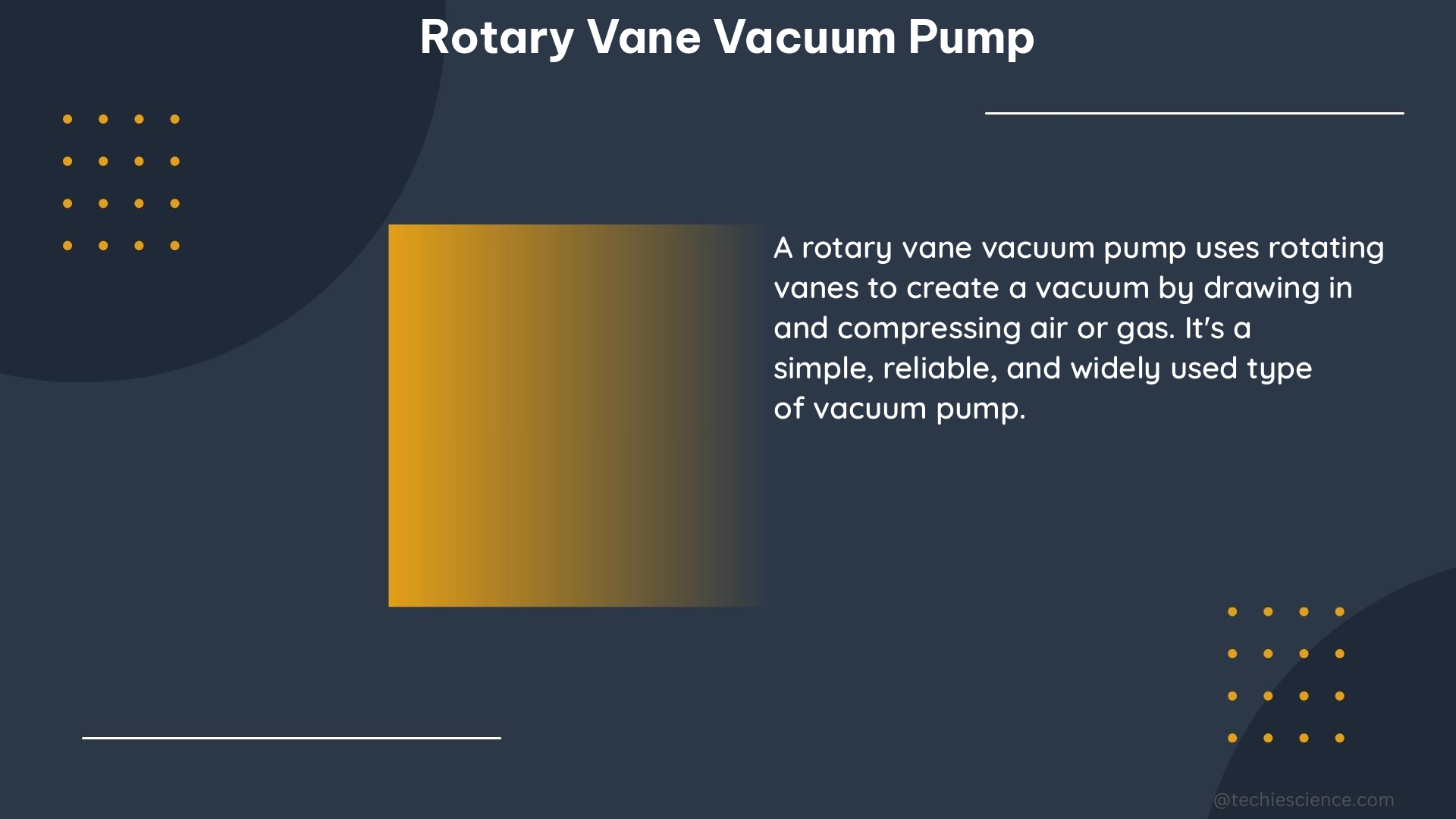Rotary vane vacuum pumps are a popular choice for a wide range of industrial and scientific applications due to their reliable performance, versatility, and energy efficiency. These pumps utilize a rotating mechanism to create a vacuum, making them an essential component in various processes that require precise control over pressure and airflow. In this comprehensive guide, we will delve into the technical specifications and key features of rotary vane vacuum pumps, providing you with a detailed understanding of their capabilities and how to optimize their performance.
Free Air Displacement (CFM/m³h)
The free air displacement, measured in cubic feet per minute (CFM) or cubic meters per hour (m³h), is a crucial specification that indicates the volume of air the pump can move in a given time. This parameter is directly related to the pump’s suction capacity and determines its suitability for different applications. Rotary vane vacuum pumps from reputable manufacturers like Welch can offer a wide range of free air displacement, typically ranging from 6-12 m³h for smaller models to 24+ m³h for larger, high-performance units.
Ultimate Vacuum Pressure (Torr/mbar)

The ultimate vacuum pressure, measured in Torr or millibars (mbar), represents the lowest achievable pressure in the vacuum system. This specification is particularly important for applications that require a high degree of vacuum, such as in scientific research, semiconductor manufacturing, or specialized industrial processes. Welch’s rotary vane pumps, for instance, can reach ultimate vacuum pressures as low as 1.5×10⁻³ mbar or 3×10⁻³ Torr, making them suitable for a wide range of high-vacuum applications.
Power Consumption
The power consumption of a rotary vane vacuum pump is an essential consideration, as it directly impacts the operating costs and energy efficiency of the system. Fisherbrand’s 2-Stage Rotary Vane Vacuum Pumps, for example, have power consumption ranging from 0.37 to 1.5 kW, depending on the model. This information allows users to select the most appropriate pump for their specific power requirements and budget constraints.
Oil Functions
Rotary vane vacuum pumps rely on oil for lubrication, sealing, and cooling. The type and capacity of the oil used are crucial specifications that affect the pump’s performance and longevity. Fisherbrand’s pumps, for instance, utilize premium vacuum oil with a capacity ranging from 0.6 to 3.0 liters, depending on the model. Proper oil maintenance and regular oil changes are essential for ensuring the optimal operation of the pump.
Gas Ballast
The gas ballast feature in rotary vane vacuum pumps allows the introduction of air into the pump, preventing the buildup of vapors and protecting the pump from corrosion. This feature is particularly useful when handling applications that involve the handling of condensable vapors or when operating in humid environments. Fisherbrand’s pumps, for example, have a gas ballast volume ranging from 100 to 200 cm³, depending on the model.
Suction Capacity/Suction Pressure
The relationship between the suction capacity and suction pressure is an essential performance indicator for rotary vane vacuum pumps. This specification demonstrates the pump’s ability to maintain a specific suction capacity at different pressure levels. Fisherbrand’s pumps, for instance, can provide suction capacities ranging from 2 to 28 m³h at various suction pressures, allowing users to select the most appropriate pump for their specific application requirements.
Motor Data
The motor data, including the type, voltage, and frequency, is a crucial specification that determines the electrical requirements and compatibility of the rotary vane vacuum pump. Fisherbrand’s pumps, for example, use single-phase asynchronous motors with voltage ranging from 100 to 230 V and frequency ranging from 50 to 60 Hz. This information ensures that the pump can be properly integrated into the existing electrical infrastructure.
Operating Temperature
The operating temperature range is an important specification that defines the allowable environmental conditions for the rotary vane vacuum pump. This parameter is particularly relevant for applications where the pump may be exposed to varying ambient temperatures or where temperature control is critical. Fisherbrand’s pumps, for instance, can operate at temperatures between 15 and 35°C, ensuring reliable performance in a wide range of operating environments.
DIY Testing of Rotary Vane Vacuum Pumps
In addition to the technical specifications, DIY testing of rotary vane vacuum pumps can provide valuable insights into their performance. One simple test involves placing a finger over the pump’s outlet or inlet and feeling the suction or air blowing out. This can help users assess the pump’s functionality and identify any potential issues, such as air leaks or reduced suction power.
By understanding the technical specifications and key features of rotary vane vacuum pumps, users can make informed decisions when selecting the most appropriate pump for their specific applications. This knowledge also enables them to optimize the pump’s performance, ensure proper maintenance, and troubleshoot any issues that may arise during operation.
References:
– Fishersci.com, 2-Stage Rotary Vane Vacuum Pumps, https://assets.fishersci.com/TFS-Assets/CCG/EU/Fisherbrand/manuals/15086_FB_Pumps_Instructions_Manuals_EN.pdf
– Welchvacuum.com, Rotary Vane Pumps, https://www.welchvacuum.com/en-th/rotary-vane-pumps
– Doityourself.com, Testing Rotary Vane Vacuum Pump – How to?, https://www.doityourself.com/forum/ducting-air-circulation-ventilation-systems/589489-testing-rotary-vane-vacuum-pump-how.html

The lambdageeks.com Core SME Team is a group of experienced subject matter experts from diverse scientific and technical fields including Physics, Chemistry, Technology,Electronics & Electrical Engineering, Automotive, Mechanical Engineering. Our team collaborates to create high-quality, well-researched articles on a wide range of science and technology topics for the lambdageeks.com website.
All Our Senior SME are having more than 7 Years of experience in the respective fields . They are either Working Industry Professionals or assocaited With different Universities. Refer Our Authors Page to get to know About our Core SMEs.